How Often To Water Spider Plants? Complete Watering Guide
Wondering how often to water spider plants? We’ve got all the details here.
Spider plants (Chlorophytum comosum) are popular indoor plants. You may have spotted their long green leaves in homes and offices.
They are one of the best beginner-friendly house plants as they are easy to care for, adaptable and very forgiving.
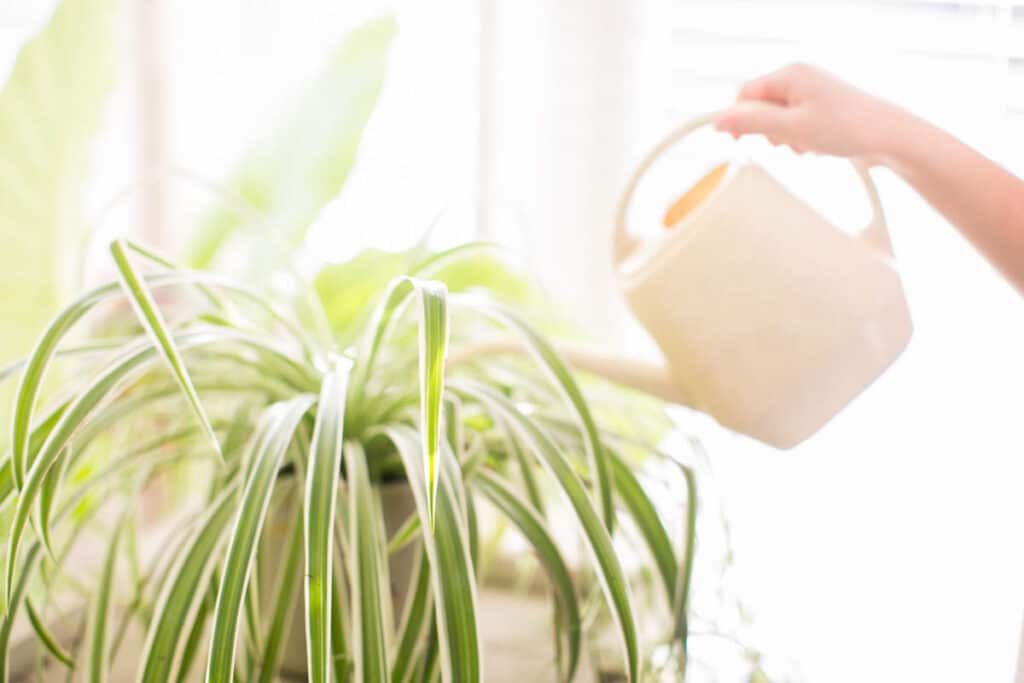
If you are just getting started with this resilient plant, keep reading to discover how often and how much water spider plants need to keep them looking lush all year round.
This post contains affiliate links. If you click through and make a purchase we make a small commission at no extra cost to you.
About Spider Plants
Native to South Africa, indoor spider plants go by several other names, like airplane plant, spider ivy, and ribbon plants. Belonging to the family Asparagaceae, they are evergreen and produce pretty white flowers.
Spider plants have a rather distinctive appearance. The leaves are long, narrow, and pointed and grow into a rosette-like arrangement.
And although they come in different varieties, the most popular have variegated leaves with white stripes or margins.
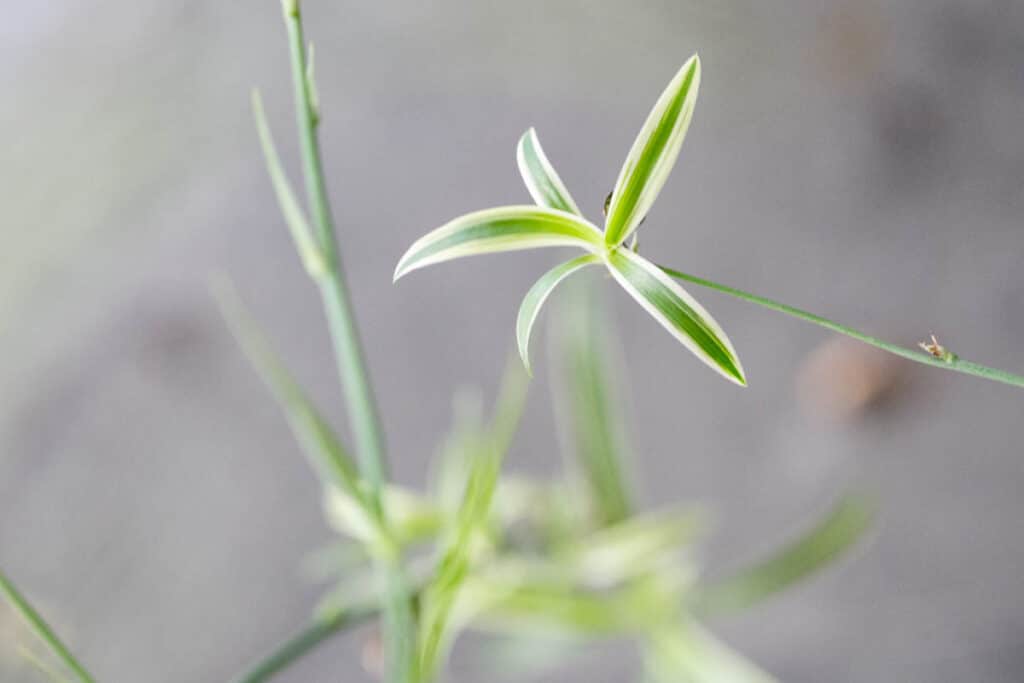
I find that the most distinctive feature of spider plants is their ability to produce small baby plants called “spiderettes” or “pups.” These baby plants usually grow on long, wire like stems that extend out from the center of the main plant.
Spiderettes have their own root system and can be easily propagated in water.
These tropical plants and are most suited for a warm climate and enjoy bright, indirect light. However, given proper care, they can flourish in various growing conditions – and that includes the right watering schedule.
This adaptability and versatility to grow anywhere makes them one of the most popular houseplants.
Spider plants grow exceptionally well whether planted in pots, in gardens, or in hanging baskets. I particularly love how they look when they spill over the edges of hanging baskets.
How Often To Water Spider Plants
The good news: spider plants do not require a lot of water. Always wait until the soil is dry to the touch before watering. Typically speaking, watering once a week is enough to keep your plant healthy.
However, don’t blindly follow this once a week schedule without checking in on your plant. The specific conditions in your growing environment will affect the watering schedule and the best way to water your plant is to follow it’s cues:

Things like your home’s temperature, the type and size of your pot, mature spider plants vs new plants, and humidity may force you to alter this watering schedule.
For instance, a spider plant in a small pot will need watered more frequently as it dries out much faster than one growing in a bigger pot.
Similarly, a mature plant will need more water as it is more root bound than a new plant.
Your best bet is to keep an eye on your plant and always let the soil dry out a bit between watering, and avoid water logging your plant.
I recommend using a soil moisture meter or finger test to determine the soil’s moisture level.
To do the finger test, insert your finger 1-2 inches into the soil. If the potting mix feels dry to the touch, that’s a sign that your plant is thirsty.
If using the soil moisture meter, the hygrometer will tell you whether or not the soil is moist.

How To Water (And How Much)
In general, water your plant deeply until water runs out of the bottom of the pot.
Knowing how often to water your spider plant is one thing, but it a different ball game knowing how much water to give your plant.
You see, there isn’t a standard amount of water to give to your spider plants. It all depends on how dry your plant is, the stage of growth, the type of soil as well as the time of the year.
Zahid Adnan, the founder of The Plant Bible advises that you should water your spider plant thoroughly until water drains out the drainage holes.
There is a caveat, though. The pot must have drainage holes to allow excess water to drain out. Otherwise, the soil will be waterlogged, resulting in root rot that will kill your plant.
A good idea is to come back after a few minutes to empty the saucer, then re check it to make sure there is no standing water around the base of your plant.
Humidity + Watering
Spider plants typically don’t need any additional moisture for humidity purpoes, but misting every once in a while will be much appreciated by the plant. They do just fine with average humidity of around 50%.
That said, if you live in an area with relatively high humidity, you won’t need to water your spider plant as often as compared to if you lived in an area with low humidity.
How Containers Affect The Watering Schedule
It is not just enough to choose well-draining soil. The type and size of container you choose to plant your spider plant will also determine how much watering you will have to do.
A small container will need more frequent watering as water dries up faster than in a bigger container.

Additionally, the material of the container matters too. If you have a pot made of clay or terracotta, you should expect to water more often than if the pot is made of plastic.
This is because clay and terracotta pots are porous materials, allowing water to seep out from the sides, unlike plastic pots, which are non-porous and retain moisture longer.
As mentioned in the section above, the container must have drainage holes to allow excess water to drain out. This will prevent water from accumulating at the bottom of the pot, which can easily lead to over watering and potentially kill your plant.
Best Water To Use
If you’ve been using regular tap water on your spider plants, perhaps you’ve noticed that your plants often have brown tips. This is because they are highly sensitive to water with a high quantity of fluoride and salts.
Though tap water may not kill your plants, it is not the best water for watering your indoor plants. You may want to switch to filtered, distilled water, purified, or rainwater, with the latter being the most preferred by spider plants.
I recommend collecting rainwater to save some bucks or investing in an affordable filtration system. It’s far cheaper than buying bottles of spring water every week.
Signs A Spider Plant Needs Watered
The most obvious sign that a spider plant needs watering is, of course, dry soil. If the container is light when you pick it up, this is also a good indicator that the spider plant needs water.
Signs your spider plant is not being watered regularly enough:
- Drooping, sagging, or wilting leaves.
- Brown tips
- Excessively dry and crispy leaves
- Slowed down growth
- Leaves losing the green, vibrant color
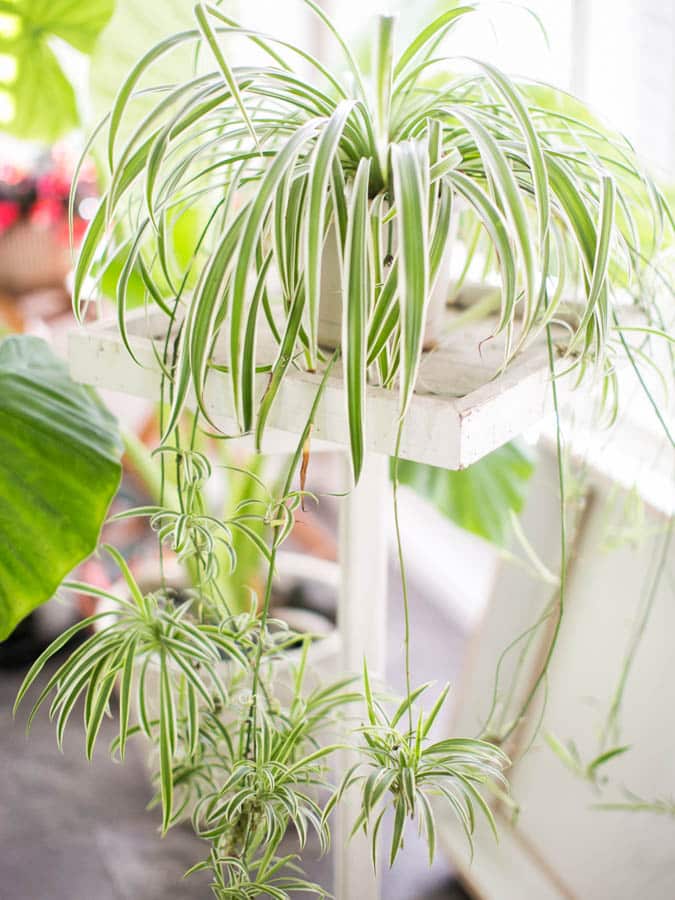
Signs Of Over-watering
Watch out for yellow leaves, soggy soil, fungus growing on the plant, and mold or mildew growing on the surface of the soil.
These are sure signs that you are drenching your plant with too much water.
Similarly, if your plant has soft, mushy roots, stems, and leaves with a sour smell, your spider plant is definitely getting more water than it needs and may have developed root rot.
Growing Conditions That Affect Water Needs
Certain growing conditions affect how much water will be needed by your spider plant, like soil and season of the year.
Soil
From my many years of owning a spider plant, I can tell you that this plant thrives in well-draining soil. The result? A healthy-looking spider plant.
Soil that features peat moss, organic matter and perlite will allow the water to permeate through the roots efficiently without creating waterlogged conditions.
If you don’t use a well-balanced potting mix, your plant will suffer and it will be hard to water it correctly. This is because the soil will either retain water for too long or will barely retain water long enough for the plant to take in what it needs, causing the tips of the leaves to brown.

Season
As mentioned earlier, spider plants do exceptionally well in warmer weather. It’s no wonder they grow actively during the spring and summer months.
And due to this active growth and the high temperatures that come with the warm season, they consume a lot more water, so it is not uncommon to water your plant twice a week.
During the colder months – fall and winter months– growth is dormant, and temperatures are low. Therefore, the soil stays moist for longer. This means you can water your plant less frequently- sometimes just a few times a month.

Learn how to grow baby spider plants here!
General Care Tips
Tending to a spider plant doesn’t just stop at watering. There are a few more things you need to know about proper spider plant care:
- Grow your spider plants in a well-draining soil mix, as mentioned earlier.
- Keep your spider plants in moderate to bright indirect sunlight. Direct light will burn them
- Re-pot your plants every 2-3 years, or when you see roots growing out of the pot
- Feed your spider plant with a balanced, water-soluble fertilizer every 2-4 weeks during the growing season (spring and summer), and reduce or eliminate fertilizing during the colder months (fall and winter).
Final Thoughts
In my experience, I have found spider plants to be remarkably forgiving and can tolerate short periods of drought.
However, regularly checking the soil and keenly observing the plant’s behavior will go a long way in helping you figure out how often to water your spider plants so that you don’t underwater or over water these beautiful tropical plants.

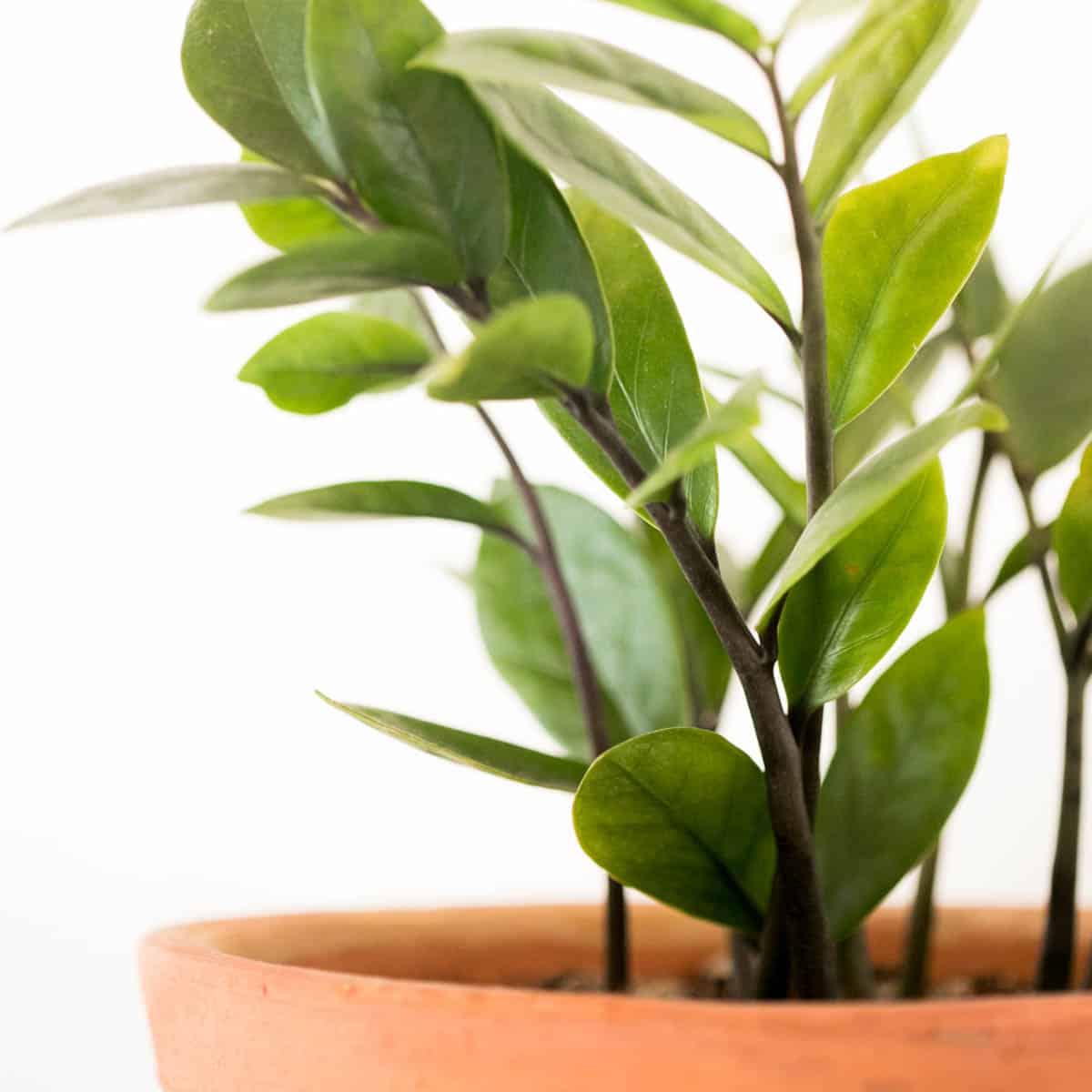
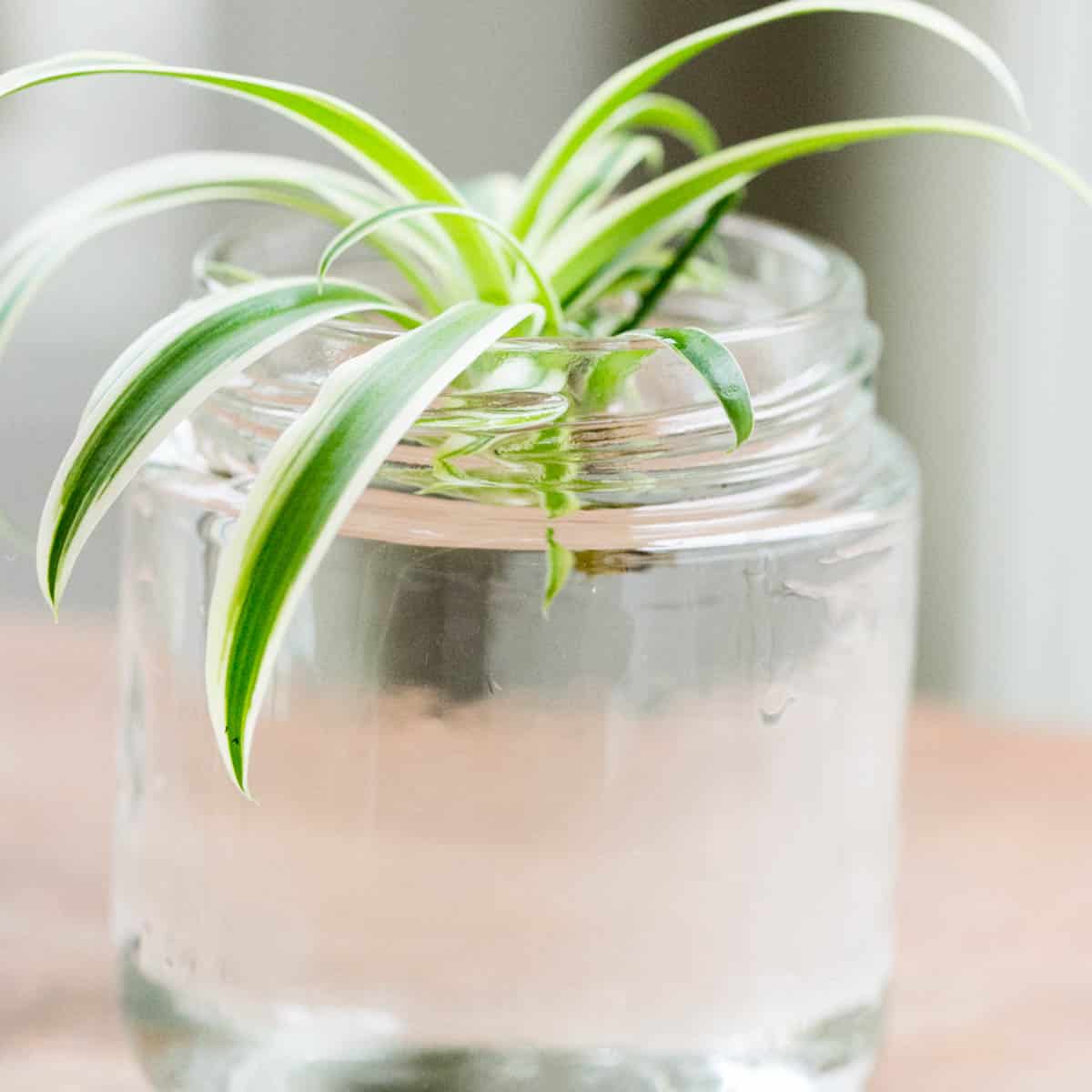
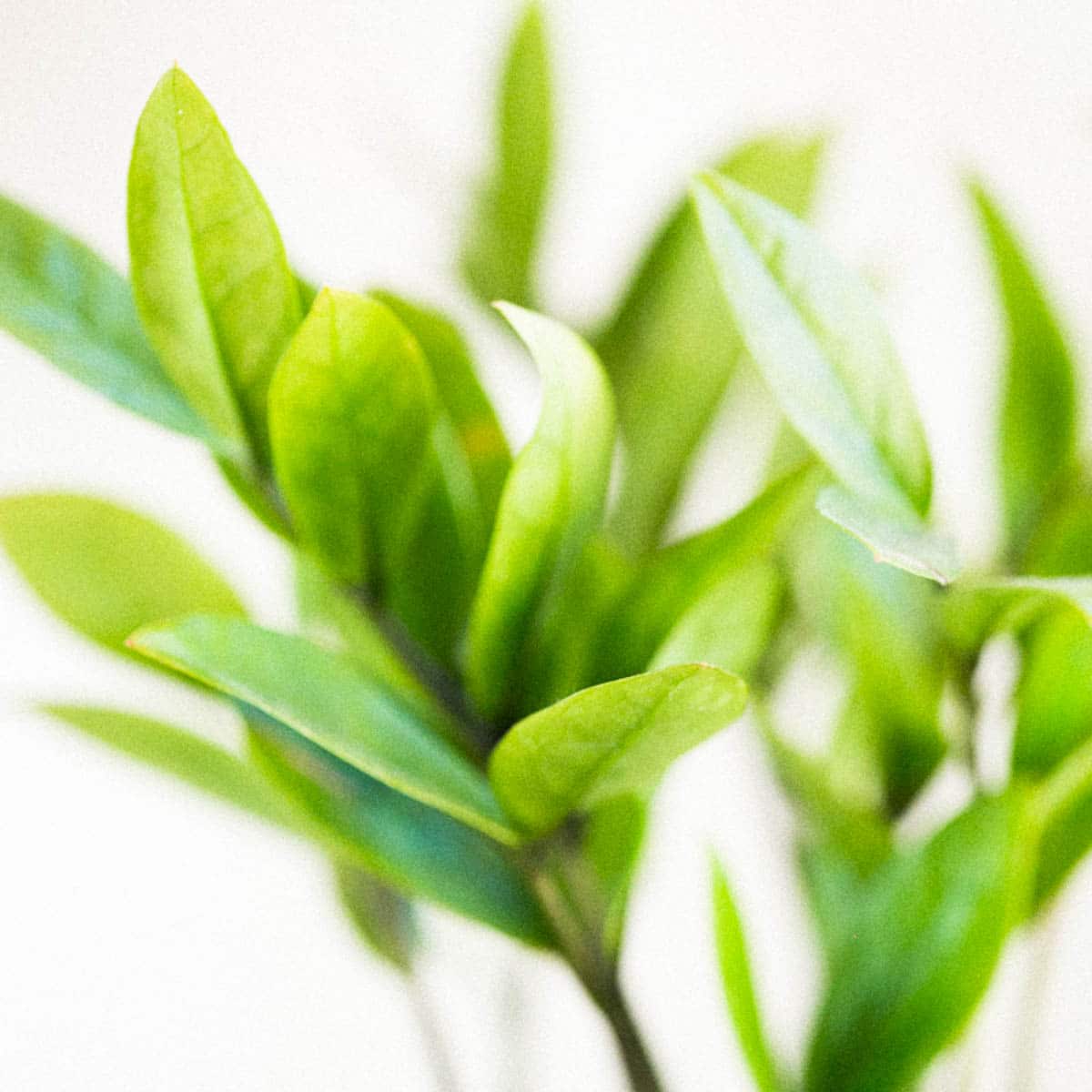

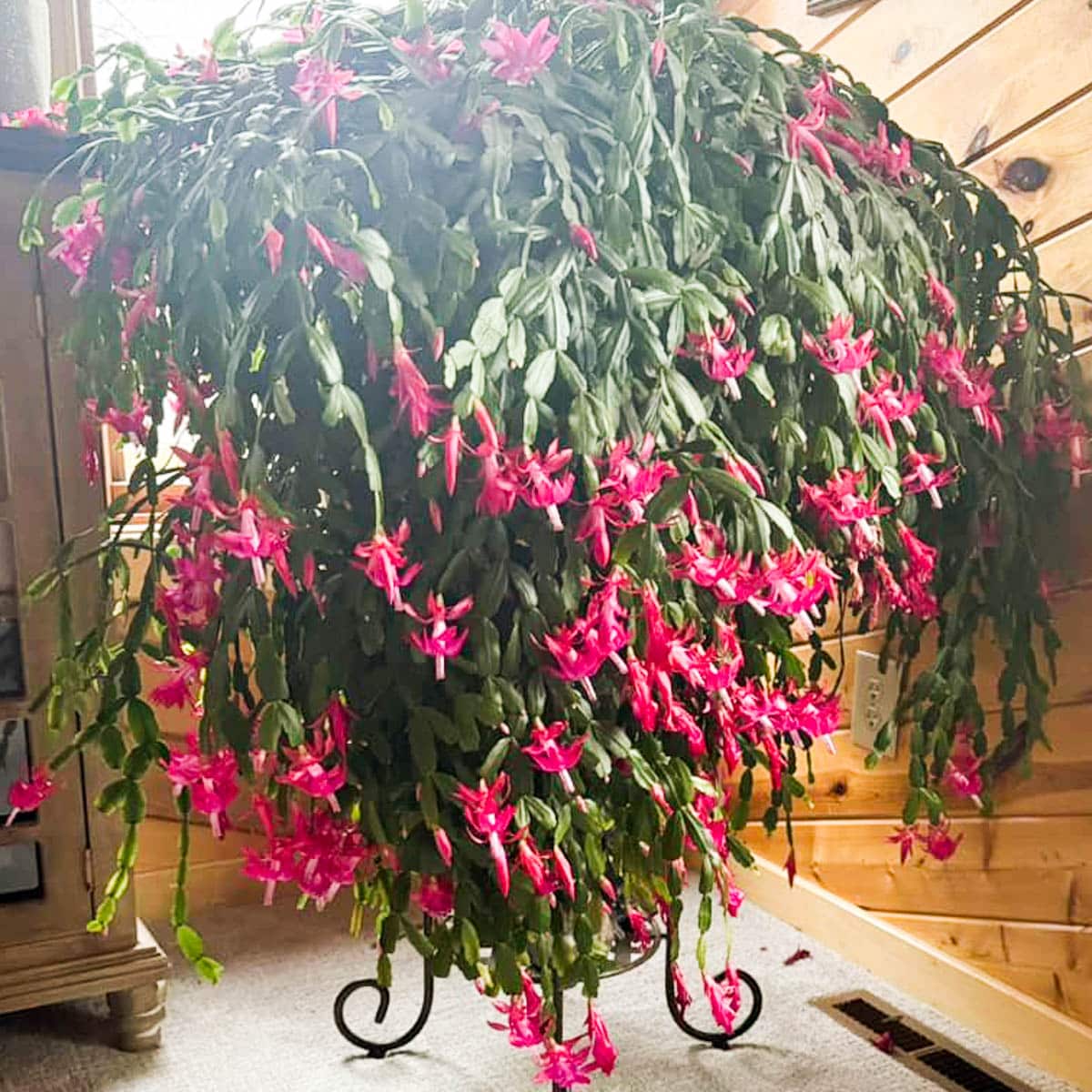

Thanks for explaining the difference between the thanksgiving and Christmas cactus, never knew before. Also. I got a baby airplane plant this spring and am babying it. It has doubled in size since then. I will follow you for some more good advice.
Hi Dee! Airplane plants are so fun. I have found them to be super hardy! We are working on a series on spider plants and will have more info up on them over the winter. I am so glad you found our article on holiday cactus useful. Happy Thanksgiving!